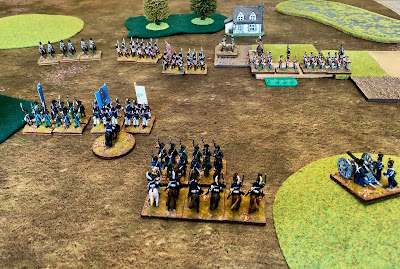This book, edited by Nicholas James Kaizer, contains the proceedings from Helion's 2022 Naval History Conference. There are 14 papers organised into three sections. Naval operations in Europe and North America and naval administration.
There is a lot of specialised content in this book, and inevitably, some I found more valuable than others. The first chapter on Venetian vessels in the Second Morean War describes how the Venetians moved from a galley to a sailing fleet. We tend to think of galleys when considering the Venetian fleet, but the Republic was the first Italian power to develop shipbuilding focused on large warships. By the time of the Second Morean War, the Ottomans were doing likewise, and this chapter discusses how both sides developed their tactics.
French and Spanish support for the 1745 Jacobite uprising covered the various efforts to get troops and supplies past the Royal Navy and into Scotland. I covered one of these, Kyle of Tongue, in a recent post about a game. I thought the French were not particularly successful, but the author's statistics show a 48% delivery rate. It was not great, but it was better than I thought.
The section on North America is not an interest of mine. However, the War of 1812 is, and the Editor's own chapter analyses ship-to-ship combats, addressing the perceived wisdom that US victories were almost always unequal fights. He examines three actions involving the Royal Navy sloops: Peacock, Boxer and Epervier. These actions highlight that some of the Royal Navy commanders during this conflict were the worst put to sea for the Royal Navy.
I didn't think I would find much interest in the final section on naval administration. However, the chapter on the reforms introduced by Anson (1751-1762) is fascinating. I will incorporate some of the analysis in my current writing project about HMS Ambuscade, as the first ship of that name was captured from the French and the design used to develop Royal Navy frigate design. Few Admirals successfully carried off political and naval careers, but Anson did. He deserves greater attention.
Other chapters in this section deal with myths about conditions aboard ships and recruitment to the Royal Navy. Despite the desperate need for sailors at the outbreak of war, forced impressment was not as significant as many think. Jim Tildesley has examined how one British Consul recruited for the Royal Navy during the Napoleonic Wars. Again, this will all add colour to my chapter on the period.
I suspect this book will be most interesting to those with a specialist interest in naval history. However, the two sections on operations still provide plenty of sea fights to keep others interested. I am writing a chapter for the next book in this series on amphibious warfare in the Adriatic. That should be published at this time next year.
 |
| I must try and play more Black Seas! |



























